UNO Magazine: State of Discovery
- published: 2018/11/21
- contact: UNO Alumni Association
- search keywords:
- UNO Magazine
- research
- Nebraska
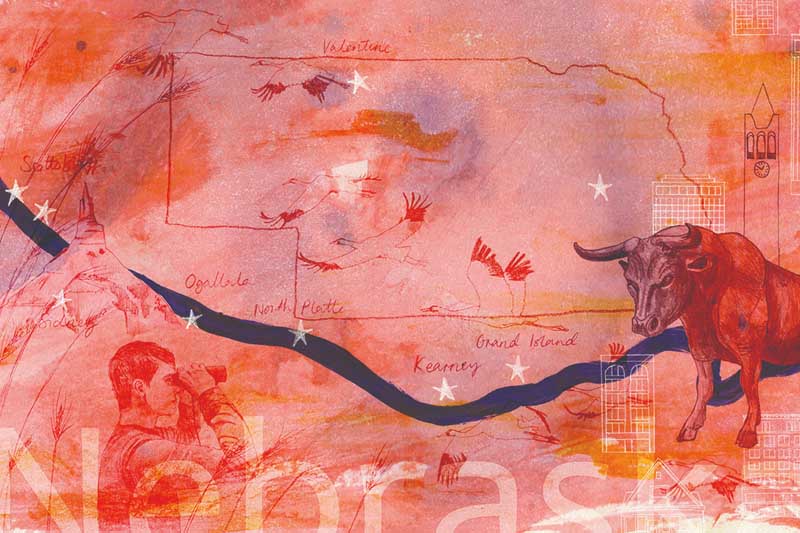
The following story appeared in the most recent issue of the UNO Magazine, which highlighted many of the ways UNO touches all part of the state of Nebraska. Read the magazine online as a Flipbook or download a PDF.
“As I looked about me I felt that the grass was the country, as the water is the sea. The red of the grass made all the great prairie the colour of wine-stains, or of certain seaweeds when they are first washed up. And there was so much motion in it; the whole country seemed, somehow, to be running.”
— Willa Cather, My Ántonia
The plains, farmlands and diverse ecosystems of Nebraska — home to a brilliant mixture of fauna and flora — have not only captured the imagination of generations of writers, but also of researchers and scientists.
Renowned frontier author Willa Cather described the rugged, natural beauty of the state and the pioneering spirit of those early Great Plains settlers, farmers and ranchers.
That connection to the land and discovery is in the state’s blood.
And UNO students are taking the pulse — through a wide range of research in Nebraska that offers promise here and beyond.
Like Cather’s prairie, their efforts are replete with motion: Long days. Late nights. Road trips. Setbacks.
And flashes of inspiration.
We profile a few of these modern-day pioneers here.
- Rachel Ostrander Brownlee
- John Kotsalis, Kyle Dlouhy and Clayton Heymann
- Jonathan Korbitz
- Conor Gearin
- Linsday Ann Brown
--------
Rachel Ostrander Brownlee
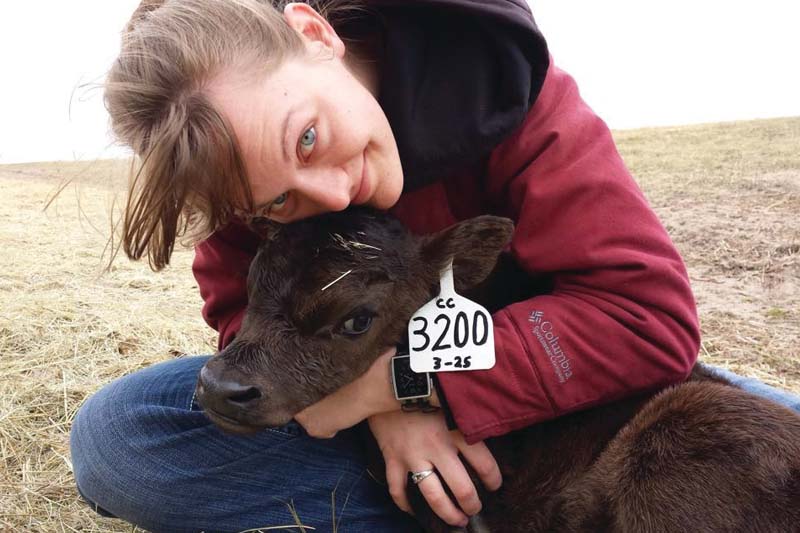
Innovation often stems from challenges and struggles — along with a dose of serendipity. That was the case for Rachel Ostrander Brownlee, an award-winning 2015 graduate of UNO’s IT Innovation program.
Brownlee, who grew up on the Pine Creek Ranch in Rushville, Nebraska, where her family raised 400 head of cattle, originally came to UNO intending to study graphic design.
To her surprise, her graphic design advisor suggested she consider computer science instead.
“I didn’t know anything about computers,” Brownlee says. “I barely knew how to use one. I was home-schooled; there was no IT education.”
But she took a chance.
In her first IT innovation course, students were asked to create a tech-related product or service. Brownlee thought of her family’s ranch — and the struggles they and other local ranchers had keeping data on their cattle.
That moment was the beginning of what would become MooManager, an agricultural software company providing ranch management software to cattle ranchers. Brownlee is the founder, CEO and programmer.
“I worked on pieces of it for each class, and for the capstone class, I built a working prototype,” Brownlee says.
She since has built another fully functioning prototype completely from scratch, incorporating many of the features she researched at UNO.
“We now use it fully on my husband’s family cattle ranch,” the JHL Ranch in Ashby, Nebraska, she says, where they raise 1,200 head of cattle.
“At this point, I am working on developing the side of it that will allow me to add other ranchers’ ideas, and to start using it on other ranches eventually,” Brownlee says.
While she is working to determine interest locally, regionally and nationally, Brownlee says she may find a better response internationally, particularly among the large cattle operations in Brazil.
Brownlee won several awards and competitions as a student at UNO, including the Maverick Business Plan Competition, the Peter Kiewit Capstone competition (twice) and the Peter Kiewit Student Entrepreneur of the Year. She also placed second at a national competition hosted by the Collegiate Entrepreneurs’ Organization, in which she gave a 90-second “elevator pitch” on her business idea.
John Kotsalis, Kyle Dlouhy and Clayton Heymann | Jonathan Korbitz
Conor Gearin | Linsday Ann Brown
John Kotsalis, Kyle Dlouhy and Clayton Heymann
Giving farmers real-time data regarding field conditions, to help improve water usage and crop yield, was the aim of a wireless sensor network designed and constructed by three May UNO graduates as part of their senior capstone project.
John Kotsalis, Kyle Dlouhy and Clayton Heymann were students in UNL College of Engineering’s Electrical and Computer Engineering Department delivered on the UNO campus. Their idea for the project came from Dlouhy’s father-in-law, a farmer in Deshler, Nebraska.
At a career fair in September, Dlouhy met with officials from Reinke, a Deshler-based manufacturer of irrigation products. Dlouhy, who had interned there, explained the group’s project, and the company pledged its support.
By the spring semester, the students were building a prototype. Reinke provided a few guidelines and some basic materials.
“But as far as putting it all together and making a prototype that worked, we did all that,” Dlouhy says.
Sensors were designed to collect data on soil moisture, temperature, humidity, wind and rain. They feed that information to a website to help farmers make more informed decisions regarding crop irrigation.
“Today, if a farmer wants soil moisture readings, they have to physically go out in the field and insert a probe,” says Kotsalis, of Omaha. “This automates the process.”
“Our hope is that these can be paired with Reinke center pivots, and together they can provide more accurate variable rate irrigation.”
Basically, this involves applying more water where it’s needed, and less where it’s not.
Currently, this irrigation method is based primarily on crop yields from previous years. “What our solution does is it gives farmers real-time knowledge of what the different parts of the field need,” Dlouhy says.
While the prototype was not tested in farm fields, the nodes showed promise in outdoor tests. “They held up great, just as we expected,” Dlouhy says. “All the sensors worked; they were reading accurate values. They reported to the website correctly.”
The students shared the technology with Reinke, but are no longer working on the project as they pursue postgraduate careers. But they are proud of their work, and seeing a project through from concept to prototype. It’s part of the real-world experience that first attracted Kotsalis to UNO.
“A lot of the program here was hands-on,” he says. “I could be in the classroom and learn theory. But I could also go into the lab and get some hands-on application. For me, that’s the best way to learn.”
Rachel Ostrander Brownlee | Jonathan Korbitz
Conor Gearin | Linsday Ann Brown
Jonathan Korbitz
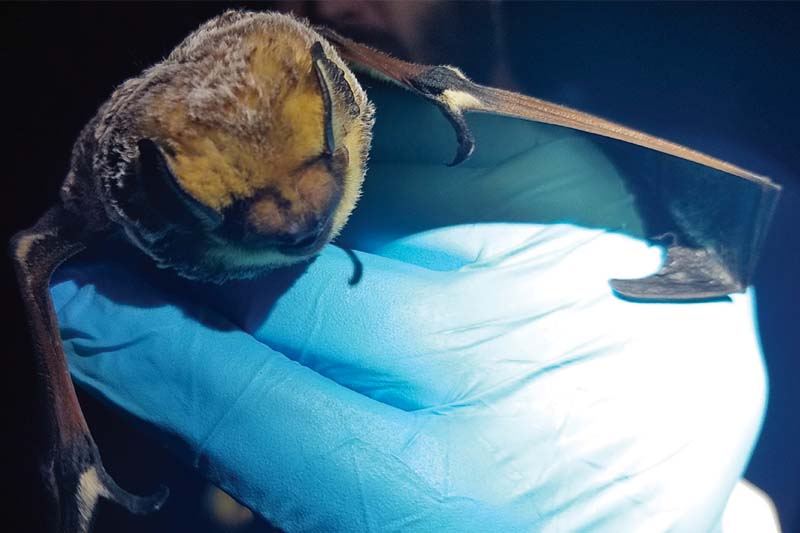
UNO senior Jonathan Korbitz is a bat man.
The biology major has been studying the northern long-eared bat (Myotis septentrionalis) — a threatened species in Nebraska — for the past year and a half under the direction of UNO biology professor Jeremy White, whose research interests include the natural history of bats in the central United States.
“Bats are fascinating creatures,” says Korbitz, who is from Omaha.
But the news from Nebraska’s bat caves has been troubling of late. A quiet but deadly super villain — a fungal disease known as white-nose syndrome — has been infecting the bats, interfering with their hibernation and leading to mass deaths here and across the northeastern United States and eastern Canada.
The U.S. Geological Survey estimates that this devastating disease has killed millions of hibernating bats since it first appeared in New York in 2007 and warns that it “continues to spread at an alarming rate.”
For those who don’t like bats — or consider them frightening — consider the following:
“It’s estimated that bats contribute billions of dollars to the agricultural sector as a natural form of insecticide,” Korbitz says. “They do a lot of work stopping bugs from eating crops and keeping insect populations in check.”
The northern long-eared bat typically hibernates from October to March. The fungus infects a bat’s nose, ears and wings, causing skin lesions. These painful lesions wake the bat from its slumber, leaving it too weak to survive. Once a cave is infected, it can kill 20 percent to 60 percent of the bat population inside, Korbitz says.
From late June to mid-July last year, Korbitz and his research colleagues traveled to four sites in Nebraska and deployed large mesh nets to trap the bats: Ponca State Park in northeast Nebraska; Larrabee Creek north of Rushville, Nebraska; Elm Creek in Kearney, Nebraska; and Fontenelle Forest in Bellevue, Nebraska. They captured 31 northern long-eared bats and took tissue samples from their tail membranes for genetic testing.
“The goal is to create a better understanding of the genetic makeup of this species in Nebraska,” says Korbitz, as little is known of the genetic diversity of these bats in the region.
This may lead to clues on how to protect the bats from the deadly white-nose fungus, which would be good for the bats, farmers and — ultimately — all of us.
Rachel Ostrander Brownlee | John Kotsalis, Kyle Dlouhy and Clayton Heymann
Conor Gearin | Linsday Ann Brown
Conor Gearin
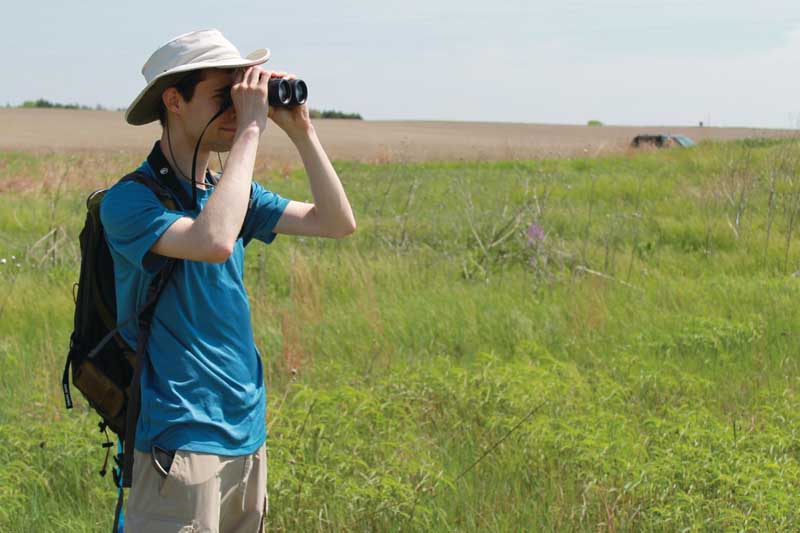
When UNO biology graduate student Conor Gearin imagines the untamed Nebraska prairie, he hears the song of a sparrow-like bird called the dickcissel.
“When you think of Nebraska pre-European settlement, who doesn’t think of the prairie stretching on endlessly and the distinctive fauna of that prairie,” Gearin says. “For me, it’s these birds. In the summer, their songs are everywhere. They let you know where you are. You’re in a grassland.”
Gearin has been studying grassland songbirds such as the dickcissel in 30 fields in five central-Nebraska counties: Howard, Greeley, Merrick, Nance and Sherman. Nebraska serves as a breeding ground for these migratory birds from May through late July and early August.
This summer is Gearin’s second working in the field, studying the birds and how they interact with their habitat. He works with private landowners; government agencies, such as the U.S. Department of Agriculture and the Nebraska Game and Parks Commission; and nonprofit organizations, such as Pheasants Forever, to explore questions of land management practices.
“Landowners and farmers can take a field out of production by signing up for the USDA’s Conservation Reserve Program,” Gearin says. “And the USDA will help them manage that habitat.”
Increasingly, private lands in Nebraska are managed for game birds, such as bobwhites and pheasants, and for the conservation of pollinator insects.
“These game birds share a lot of the same habitat needs as these other native grassland birds, which are in decline,” Gearin says. “So it could be good news for everyone.”
The dickcissel is a relative of the cardinal, though it bears little resemblance. Its typical colors are yellow, black and brown, and it’s named for the sound it makes when it sings.
“This is a typical bird you would hope to see in a Nebraska prairie,” Gearin says.
Gearin earned his undergraduate degree in biology from Truman State University and holds a master’s degree in science writing from MIT. He will earn his master’s degree in biology from UNO this December. A native of St. Louis, he loves the image of the Midwestern prairie.
“It’s a big part of our natural legacy,” he says. “Whenever you conserve grassland habitat, it feels like you’re giving back and paying respect to that natural legacy.”
Rachel Ostrander Brownlee | John Kotsalis, Kyle Dlouhy and Clayton Heymann
Jonathan Korbitz | Linsday Ann Brown
Lindsay Ann Brown
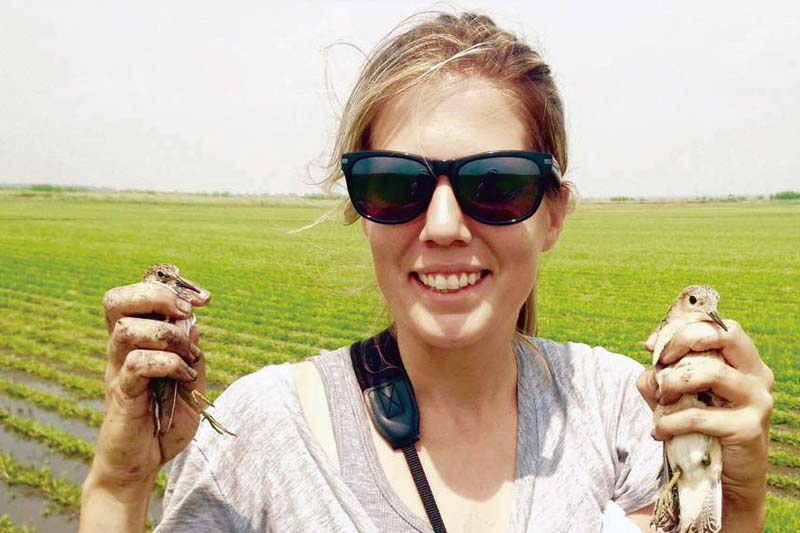
Lindsay Ann Brown of Omaha earned her undergraduate degree in environmental studies from UNO in 2013 and a master’s degree in biology this May. She studied plant ecology as an undergraduate, but an ornithology class her final semester gave wings to a new research interest.
“I became so interested in birds after this class,” Brown says. “My professor told us about how these tiny, little shorebirds travel halfway around the world. That’s when I really got interested in migration.”
As a graduate student, Brown has studied three long-distance migrating shorebird species — the American golden-plover, the buff-breasted sandpiper and the upland sandpiper. These birds winter in southern South America and migrate across the Great Plains to breeding grounds in the Arctic. The agricultural fields of south-central Nebraska’s Rainwater Basin are a favorite April and May stopover.
Brown visited about 100 sites, observing the birds and their interaction with the habitat. To the untrained eye, the fields appeared the same — flat and, in early spring, bare. But Brown began to notice subtle differences.
“Even though, looking at it, you would say an ag field is an ag field,” Brown says, “these birds don’t see it that way. They are selecting specific features in these fields.”
The buff-breasted sandpiper, for instance, prefers raised elevations — which might aid in courtship. “We’re thinking that they are using these higher spots to attract other ‘buffys’ in the nearby fields,” Brown says. These are also favored locations for increasing numbers of wind turbines, creating a potential conflict.
“A lot of the shorebirds are declining, especially these migrants, as their stopover sites are being changed,” Brown says. “This could help us identify areas that are really important to migrating birds, and maybe move turbines.”
Brown has presented at conferences in Nebraska and Michigan, and addressed a working group in Peru that is developing a conservation plan for the buff-breasted sandpiper.
She currently is working as a conservation biologist at Coastal Bend Bays and Estuaries Program in Corpus Christi, Texas, trying to improve the nesting conditions for waterbirds and the black skimmer, whose habitat was upset by Hurricane Harvey.
“My graduate degree prepared me well,” Brown says. “I feel like I have a good grasp of how to develop a research question and how to get the answers.”
Rachel Ostrander Brownlee | John Kotsalis, Kyle Dlouhy and Clayton Heymann
Jonathan Korbitz | Conor Gearin
About the University of Nebraska at Omaha
Located in one of America’s best cities to live, work and learn, the University of Nebraska at Omaha (UNO) is Nebraska’s premier metropolitan university. With more than 15,000 students enrolled in 200-plus programs of study, UNO is recognized nationally for its online education, graduate education, military friendliness and community engagement efforts. Founded in 1908, UNO has served learners of all backgrounds for more than 100 years and is dedicated to another century of excellence both in the classroom and in the community.
Follow UNO on Facebook, Twitter (X), Instagram, LinkedIn, and YouTube.